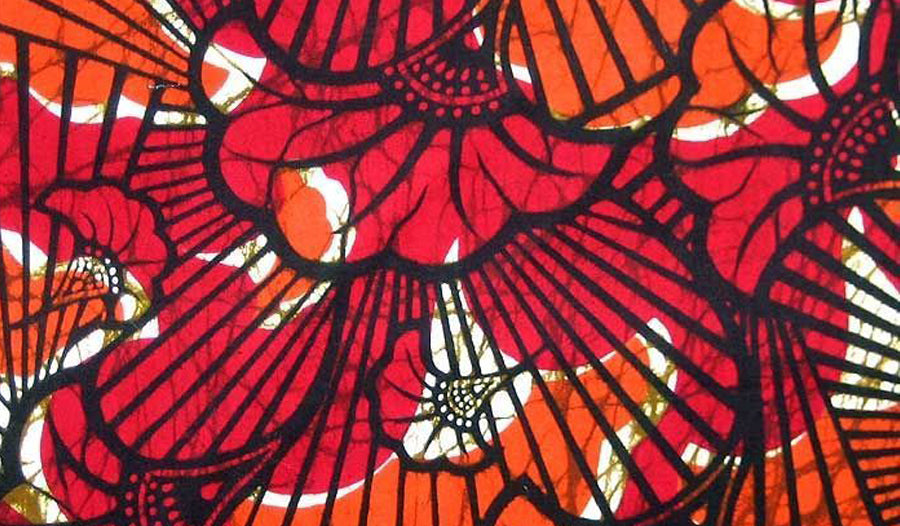
Yinka Shonibare and Wax Print
 The work of Yinka Shonibare CBE (RA) is instantly recognisable by his characteristic use of African Wax print. Through his work in painting, sculpture, photography, film and installation, the British-Nigerian artist examines race, class and the construction of cultural identity through incisive political commentary on the tangled interrelationship between Africa and Europe, and their respective economic and political histories. Alongside the brightly coloured wax print fabric, he uses wry citations of Western art history and literature to question the validity of contemporary cultural and national identities.
The work of Yinka Shonibare CBE (RA) is instantly recognisable by his characteristic use of African Wax print. Through his work in painting, sculpture, photography, film and installation, the British-Nigerian artist examines race, class and the construction of cultural identity through incisive political commentary on the tangled interrelationship between Africa and Europe, and their respective economic and political histories. Alongside the brightly coloured wax print fabric, he uses wry citations of Western art history and literature to question the validity of contemporary cultural and national identities.
 Image: Yinka Shonibare, The British Library, 2014 © Yinka Shonibare CBE
Image: Yinka Shonibare, The British Library, 2014 © Yinka Shonibare CBE
A constant thread throughout his practice has been the use of Dutch, or ‘African’ Wax print - a brightly coloured and patterned fabric that is created by dyeing the fabric with a wax-resist. On the one hand, Shonibare makes use of the fabric for its distinctive and symbolic link to West African societies and culture. However, he is also drawn to the fabric for its complex, multi-cultural history; it was first mass-produced in Holland, inspired by Indonesian Batik designs, and then sold on to West Africa in the 19th century from Europe where, to be a commercial success, it needed to reflect African tastes, aesthetics, proverbs, culture and patronage. Now the fabric is prolific across West Africa and is an important typical expression of African culture and national identity. The entangled history gives the fabric a complexity which Shonibare relates to his own identity, as both British and African, highlighting how cultural signifiers are never as straightforward as they might seem. Shonibare writes, “I’m very interested in the colonial relationships between Africa and Europe, and the fabrics have become a metaphor for that.”

Image: Yinka Shonibare RA, Party Time: Re-imagine America, 2008. Nine lifesize fibreglass mannequins, Dutch wax printed cotton textile, leather boots, table, eight chairs, and other mixed media. © The Newark Museum of Art
In many of his sculptures, such as Party Time: Re-Imagine America (2008), Shonibare pairs African Wax print fabric with victorian-style costumes for his mannequins. This hybridisation serves to highlight British colonial history and its role in the dissemination of wax print fabric to West Africa. However, the bold, bright patterns that swathe the mannequins subvert these relationships and instead form a riotous celebration of multicultural identity.
On Wednesday 7 April we will be hosting an evening of virtual discussion on African Wax Print, followed by a screening of Aiwan Obinyan’s documentary film Wax Print. To find out more about the event and to book tickets, visit the talk page: Wax Print, Film Screening by Aiwan Obinyan.